Big Data is certainly a part of the business landscape, but how does an enterprise determine a profitable strategy? Lattice Engine has considered an approach in their infographic idea - that sales and marketing can be coordinated through big data. Check out the infographic below to see how both sales and marketing departments can work together for an effective Big Data plan.
Social Media Week Chicago was once again a success, with a reported 7,000 people in attendance for #SMWChicago2013. The September event as held at various locations throughout downtown Chicago and a few nearby such as Northwestern's Medill School of Journalism. Chicago Cultural Center and DePaul's Law School were locations, as well as Google's Chicago offices.
For those who don't know: Social Media Week is held twice a year, usually February and September. Several cities and their local businesses simultaneously host sessions on various topics on social media. Each city gets its own version of the Social Media Week hashtag on Twitter - thus #SMWChicago for Chicago. For the September week, Sao Paulo, London, Toronto, Bogota, and Los Angeles joined with Chicago for various local panels.
This year the emphasis was on data and development, with a broader eye for civic uses of social media. Chicago has been growing as a leader in establishing a developer's environments, but it also has pushed the boundaries for encouraging citizens to access city services. Topics I attended include
Social Media & Higher Education through the Lens of Ethics and the Law, hosted by DePaul Law. Daliah Saper of Saper Law was a speaker on this panel.
#SMWChicago Industry Night Mixer , a night featuring local breweries and wineries with their perspective on engaging fans through social media
Keynote: Test And Learn: Nissan’s approach to taking risks in social media featuring Nissan heralding its foray into wearable devices with its sportwatch for its Nismo sub-brand of vehicles.
Venues large and small participated around Chicago. Google with a collaborative version of Maps called Mapmaker, where businesses can update their Google Map business listing details.
Northwestern's Medill School of Journalism this year noted its collaboration with One.org, a non profit organization well known to raise congressional awareness of social issues.
Chicago Black Business Network hosted an social media panel at Operation Push in which several businesses spoke about how to boost social media, particularly among black businesses in Chicago.
Check out the images below for a recap of the week. To learn more about Social Media Week, check out socialmediaweek.org.
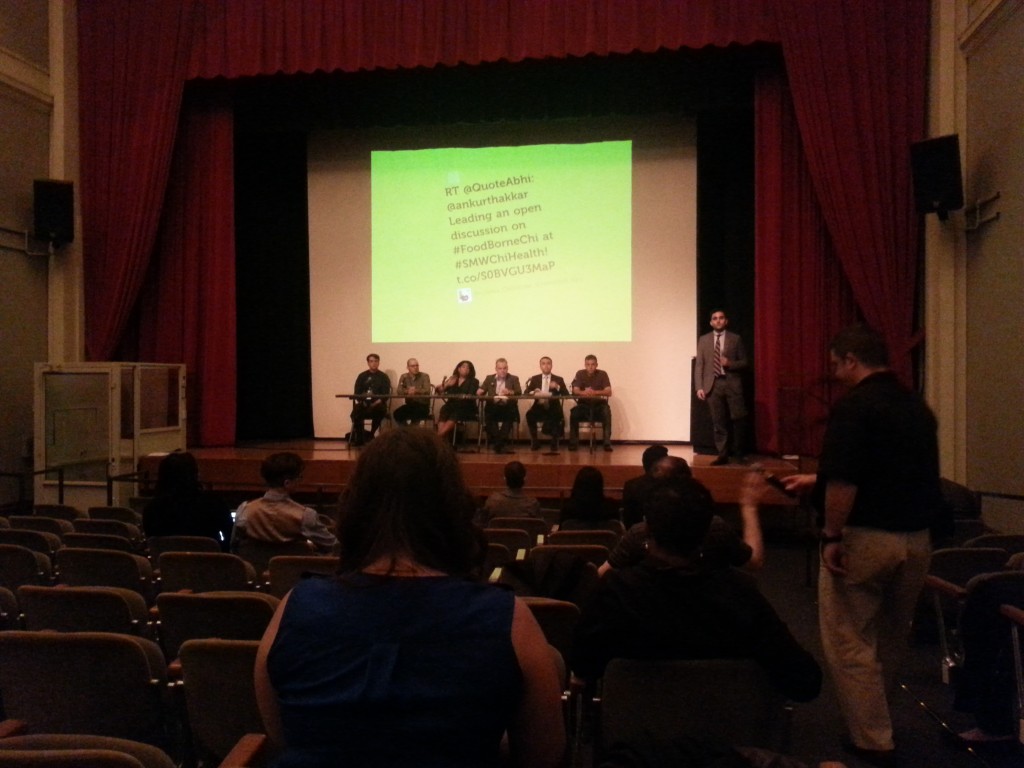
A panel at the Chicago Cultural Center explains how tweets are monitored to learn about customer health issues at restaurants around the city

Nissan Social Media Erich Marx (@emarxe) explains how Nissan engaged fans of the Z for a Project Z car build. The event lead to Motor Trend supporting a track race with a Z fan
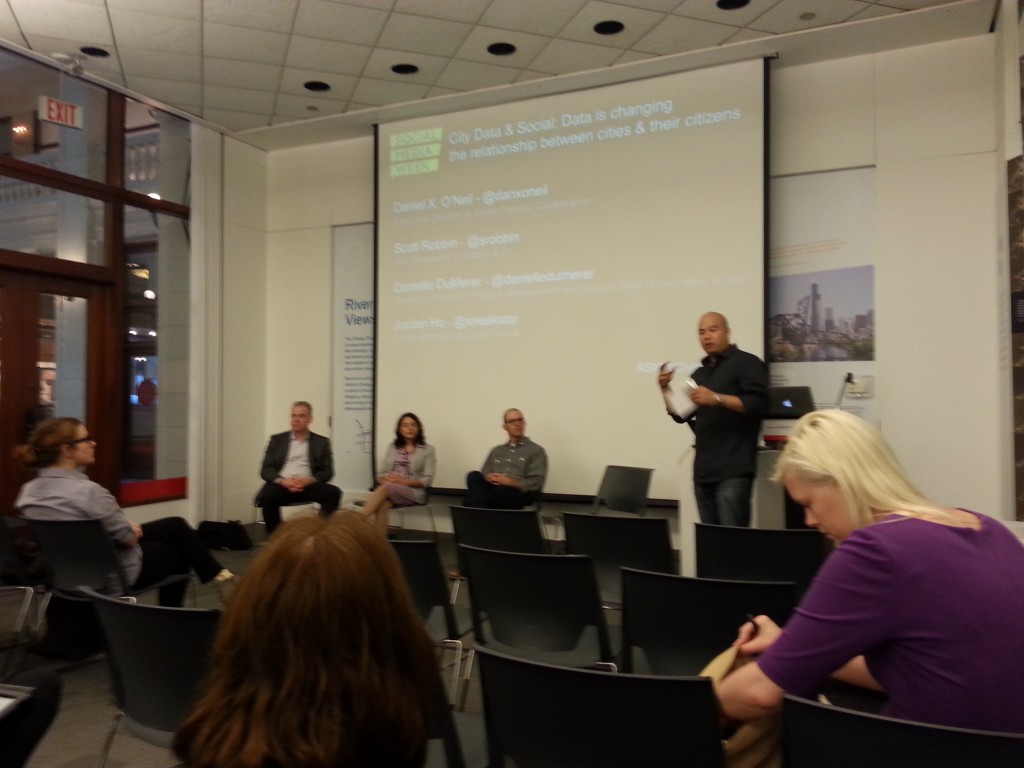
The City of Chicago was well represented to explain city services that are augmented with apps and social media data.
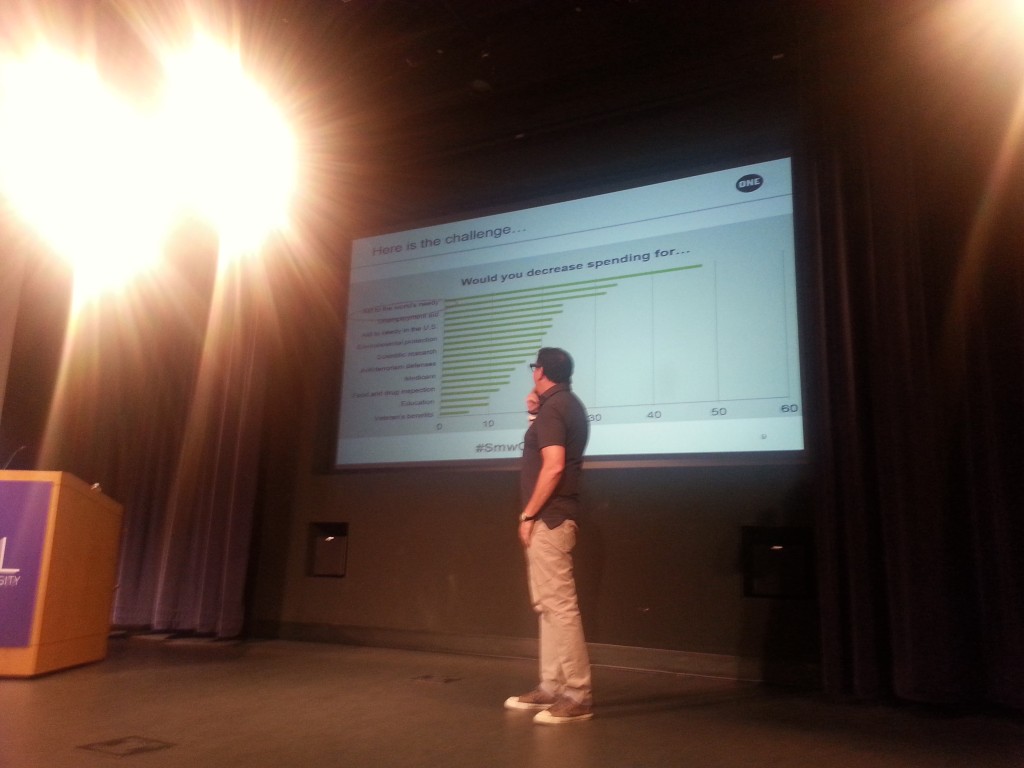
Jeff Davidoff, Chief Marketing Officer for ONE.org, explains how social behaviors, particularly among millennials are being shaped and impacting how social issues are being shared today.

Robyn Thicke may have started some controversy with "Blurred Lines" - Having fake followers will be worse for your business (Image source: Robyn Thicke Google Plus Page)
Robin Thicke was controversial with his hit song "Blurred Lines". But manufacturing fake fans and followers can be just as controversial to your customers and a severe detriment to your business. The marketplace for fake fans stems from a combination of small businesses trying to socially engineer their importance - the fake it until you make it syndrome. It is also a technological evolution of the fake link era that plagued early websites (see this Zimana post on why bad links are, well, bad). Also, social media is becoming a strong influencer of purchasing decisions. eMarketer, for example, noted how consumer reviews in social media are more highly considered than that from critics. So the temptation to social engineer favorable images about one's business is high. There are many people who think buying fake followers is acceptable. But it's anti-analytic. And there are more than a few good reasons why buying a bunch of fake followers is an awful choice for your brand and can turn off customers.
The problem looks like it will continue on. Gartner noted in a report that by 2014 1 out of 10 reviews, likes, or followers will be fake. The Next Web also reported how thousands of business are buying followers.
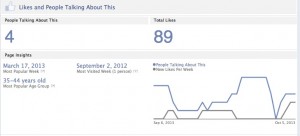
Click on the Total Likes of a Facebook Page: You'll see a summary like this one. No activity is a sign of potentially bought likes.
There are a few steps businesses can use to avoid "blurred lines" when it comes to genuine customer engagement.
Early this year, Zimana received the privilege of being named among the Top 100 Twitter accounts that covers big data and related topics. The Peer Index #bigdata100 Twitter campaign began by asking the Big Data Republic site audience to nominate their favorite Twitter accounts that provide thought provoking big data topics and conversation. 181 nominations were selected. Zimana was ranked 38 among the final 100 selected.
Zimana is truly grateful to be included among a stellar list of big data experts and specialists. "I wish all the nominated accounts the best as the analytic world continues its mission to positively influence the world," says Zimana founder and Chief Digital Marketing Strategist Pierre DeBois. To see all 100 accounts selected, read this overview by Big Data Republic.
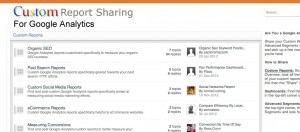
Sites like Custom Dashboard can inspire new ways to view and analyze data, as well as address minor sticking points that can occur in solutions.
Dashboards are becoming more dynamic by the day. That complexity can sometimes raise questions that your business team can not immediately answer. But queries does not mean your support has to be un-dynamic. More and more sites are launching to help businesses tackle detailed questions about dashboards and data visualization. Here are a few resources that can help:
Also consider some analytic resources for questions about tags, software updates, and ideas. Here are some resources where you can ask questions - along with tips for what questions should be asked.
(This post originally appeared in Digital Draw, a digital banking site sponsored by Intel)
With the proliferation of devices offering customers new online access, businesses are increasingly faced with even more measurement methodologies. Deciding which channels lead to actual customers at stores can be as much a sport as choosing a NCAA bracket.
The study of marketing attribution - the process of assigning sales contributions from one or more marketing channels - also provides what I think is an implied opportunity for small retailers managing multiple digital customer engagement. Let's look at it from the perspective of a digital signage display - all the rage and increasingly a part of urban business marketing, small or large.
Digital display signage can bridge offline and online marketing exposure. The media served can guide customers who discover the offer online to valuable offers and online information sources prior to a purchase or sales discussion.
The most recent studies have revealed the value of offline influences on a digital marketing plan. For example, eMarketer noted in a recent article on multi-channel marketing that despite fragmentation of customer attention, “Offline channels such as TV, radio, and print media were the ways consumers frequently discovered new brands.” Media for a digital display signage can provide means to first catch the customers’ offline eye, showing online-purposed media that leads customers to view an online offer or information regarding services.
Furthermore, positioning digital signage among offline marketing sources can be a known variable in a confusing effort to attribute marketing channels, particularly when non-technical reasons are involved. In fact many respondents to a Google and eConsultancy marketing attribution white paper Marketing Attribution: Valuing The Customer Journey stated that conflict among departments during attribution analysis can be a significant obstacle.
But by planning digital signage media that address department objectives in a campaign, retail banks have an opportunity to align departments around the customer sales experience. The benefit is a effective application of knowledge that can better discern the customer path and choose the metrics that matters most. Google/eConsultancy survey respondents believed that understanding the sales cycle is a key factor to interpreting analytic data and to revealing the marketing channel most likely to influence customers.
Marketing attribution analysis is still in its infancy among practitioners. Digital display signage with online-purposed media campaigns can mature that effort in a great way for many banks seeking offline and online success in reaching customers.